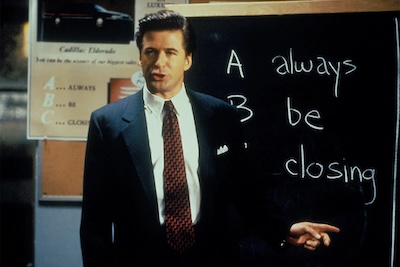Composer Ariel Marx talks to The Contending about what it was like scoring the laugh-cry limited series Dying for Sex on Hulu.
Music is important to any TV series, but it proved to be crucial in supporting Dying for Sex‘s unique celebration of life, death, and the pursuit of sex.
“Everyone making this show thought, how are we going to pull off this tonal tightrope?” says Dying for Sex music composer Ariel Marx. “And it was a really thin tightrope! We never wanted it to feel disingenuous or too dark. [The podcast] had so much of the DNA built into it to get to the heart of it.”
Going back to her initial conversations with series creators Liz Meriwether and Kim Rosenstock, Marx says they wanted to approach the music and the vibe of the show in the same raw, honest way.
“The music had to be just as messy as the story and just as tonally complex. We wanted to keep it sparse and honest. What does it sound like, a body that’s at odds with itself? A body failing but also exploring and doing exactly what it’s made to do? Plus, the Nikki (Jenny Slate) element of it all. She’s such a beautifully chaotic, bright source of contrast to Molly. It was so nice to be effervescent, pulsy, synthy, and fun, while also including some chaotic elements that resonate with Nikki, who’s way out of her depth.”
The score itself bursts with hopefulness, curiosity, and a little silliness, vibrating with electronic tones and acoustic elements.
“Regardless of instrumentation, everything was going to be degraded and worn. There was a lot of tape saturation and distortion, arpeggiators going in and out of sync, and inconsistent tempos and harmonies. There’s a lot of disassociation in Molly’s story. Her journey getting back into her body is woven in with intruding thoughts, jolting you in and out. She really is like a young animal searching her way through all of this. Lots of colors in the score imply this is new and curious.”
Of course, the score also grounds the heavy traumatic experiences with sparser pieces as the season goes on, when she gets sicker.
“The music is less energetic and more poignant [toward the end of the series]. I was happy we were restrained in those dark moments. It would be super easy to over-manipulate, but we found the right balance.”
One of the showstopping moments for the series, Michelle Williams, and the score is Molly’s Dance in Episode 6’s “Happy Holidays.” Molly depicts her childhood sexual abuse through interpretative dance, working through years of trauma to Marx’s beautiful score.
“It was a tone piece I generated from the scripts and the outlines of the story. I had no idea it was going to be where it was used. It’s an instinct beyond my own that got to influence that. When you have multiple people making that decision versus just me, that really yields more impactful results. We toyed with a lot of different versions of that piece, some with more elements, some with more builds and emotional impact. We ended up with version one. The simplest ended up being the most effective and poignant.”
But of all the special musical moments and scenes in Dying for Sex, Marx points to one scene in particular as her favorite.
“When Nikki and Gail (Sissy Spacek) are watching Molly pass away, there’s this beautiful time-lapse of them sitting and waiting and a beautiful moment where it’s Molly in bed with her mom and that little girl who played Molly as a child is laying there, too. That just completely destroyed me. The piece of music we used there was so simple and understated. I think it was the right combination of everything that made that scene so impactful, rather than a sweeping piece of music. That one’s called ‘My Favorite Person’.”
Dying for Sex is streaming on FX on Hulu.








![‘Jane Austen Wrecked My Life:’ A Chat With Filmmaker Laura Piani, Star Camille Rutherford [VIDEO]](https://thecontending.com/wp-content/uploads/2025/05/5.tif-120x86.jpg)
